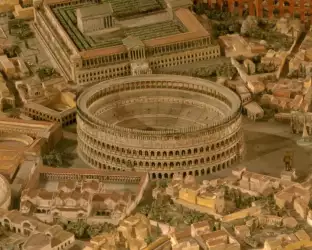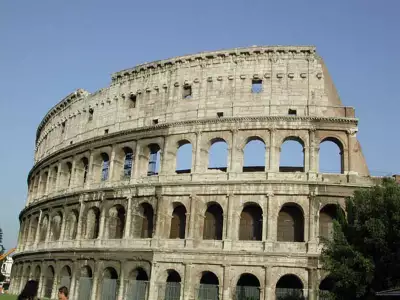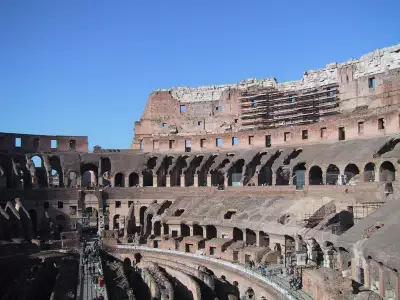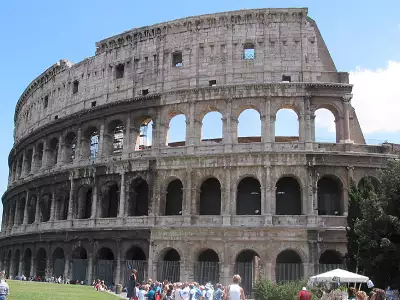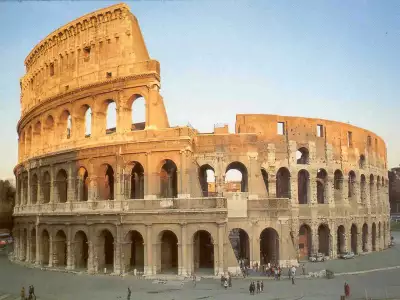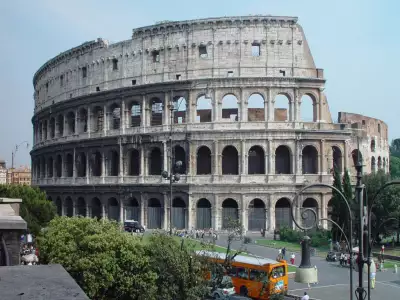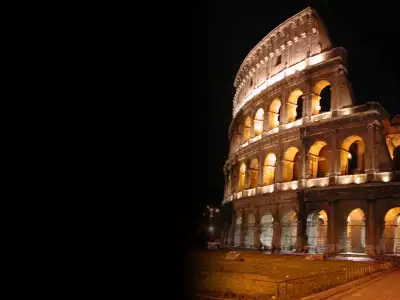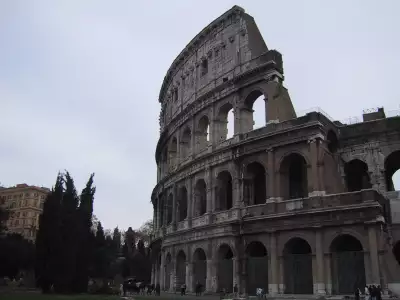Colosseum
Colosseum Wallpaper is free to download high quality desktop and mobile wallpaper with many resolutions up to 1280x1024 pixels
The Colosseum, originally known as the Flavian Amphitheater, is an amphitheater in Rome, capable of seating 45,000 spectators, which was once used for gladiatorial combat.
Its construction began under the Emperor Vespasian in 72 A.D. and was completed by his son, Domitian, in the 80s A.D. It was built near the site of Nero's enormous palace, the Domus Aurea, which had been built after the great fire of Rome in 64. (Some historians opine that the construction of the Colosseum might have been financed by the looting of King Herod the Great's Temple in Jerusalem which occurred about 70 A.D.). Dio Cassius said that 9000 wild animals were killed in the one hundred days of celebration which inaugurated the amphitheatre opening. The legend says the Colosseum's name was derived from a colossus (a very tall statue) of Nero nearby. This statue was later remodeled by Nero's successors into the likeness of Sol the sun god by adding the appropriate solar crown.
The Colosseum hosted large-scale spectacular games that included fights between animals (venationes), the killing of prisoners by animals and other executions (noxii), naval battles (naumachiae, via flooding the arena), and combats between gladiators (munera). It has been estimated that about 500,000 people died in the Colosseum games.
The Colosseum was ingeniously designed. It has been said that most spectacle areas (stadiums, and similar) have been inspired by concepts expressed in the Colosseum's structure, even in modern times. Seating (cavea) was divided into different sections. The podium, the first level of seating, was for the Roman senators, and the emperor's private box was also located on this level. Above the podium was the maenianum primum, for the other Roman aristocrats who were not in the senate. The third level, the maenianum secundum, was divided into three sections. The lower part (the immum) was for wealthy citizens, while the upper part (the summum) was for poor citizens. A third, wooden section (the maenianum secundum in legneis) was a wooden structure at the very top of the building, added by Domitian. It was standing room only, and was for lower class women.
The most ingenious part of the Colosseum was its cooling system. It was roofed using a canvas covered net-like structure made of ropes, with a hole in the center. This roof sloped down towards the center to catch the wind and provide a breeze for the audience. Sailors manipulated the ropes. The Colosseum also had vomitoria - a passageway that opens into a tier of seats from below or behind. The vomitoria of the Colosseum in Rome were designed so that the immense venue could fill in 15 minutes, and be evacuated in 5 minutes. Each entrance and exit was numbered, as was each staircase. (There were 80 entrances at ground level, 76 for ordinary spectators and 4 for the imperial family.) The vomitoria quickly dispersed people into their seats and upon conclusion of the event disgorged them with abruptness into the surrounding streets - giving rise, presumably, to the name.
The Colosseum measured 48 metres high, 188 metres long, and 156 metres wide. The wooden arena floor was 86 metres by 54 metres, and covered by sand to soak up blood. Its elliptic shape avoided the players retreating to a corner, and allowed the spectators to be closer to the action than a circle would allow. Underneath the arena was the hypogeum, a network of tunnels and cages where gladiators and animals were held before contests began. There were also numerous trap doors in the arena floor for the various animals hidden underneath. The arena floor no longer exists, and the hypogeum is visible in the ruins of the building. The entire base of the Colosseum was equivalent to 6 acres.
The Colosseum was in continuous use until 217, when it was damaged by fire after it was struck by lightning. It was restored in 238 and gladiatorial games continued until Christianity gradually put an end to those parts of them which included the death of humans.
The building was used for various purposes, mostly venationes (animal hunts), until 524 even two earthquakes (in 442 and 508) caused a great damage to the structure. In the Middle Ages, it was severely damaged by further earthquakes (847 and 1349), and was then converted into a fortress. The marble that originally covered it was burned to make quicklime. During the Renaissance, but mostly in the Baroque age, the ruling Roman families (from which many Popes of the Catholic Church came) used it as a source of marble for the construction of St. Peters Basilica and the private Palazzi. A famous description is in the saying Quod non fecerunt Barbari, fecerunt Barberini; what the Barbarians weren't able to do, was done by the Barberinis (one such family).
John Paul II holds a yearly procession within the ellipse in memory of Christian martyrs. However, there is no historical evidence that Christians were tortured and killed in the Colosseum [1] In recent years, the local authorities of Rome have ordered the lighting of the Colosseum to be lit all-night-long whenever a condemned to death penalty gets its sentence commuted or indulted. (source: www.wikipedia.com)
